Description
The instruction for medical use
of Ospamoks® medicine
the Trade name
of Ospamoks®
the International unlicensed
name Amoxicillin Dosage Form Powder for preparation of suspension for intake of 125 mg / 5 ml and 250 mg / 5 ml
Structure
of 5 ml of suspension contains
active agent: amoxicillin of 125.00 mg (in the form of amoxicillin of trihydrate of 146.40 mg) or 250.00 mg (in the form of amoxicillin of trihydrate of 287.00 mg),
excipients: fragrance lemon, fragrance peach and apricot, anhydrous citric acid, Natrium benzoicum, aspartame, talc, trisodium citrate anhydrous, fragrance orange, guar, silicon the dioxide besieged.
The description
Powder white till slightly yellowish color, with a smell, fruit and characteristic of active agent.
The prepared suspension – white till slightly yellowish color, with a smell and bitter-sweet taste, fruit and characteristic of active agent.
Pharmacotherapeutic group
Antibacterial drugs for system use – Penicillin. Beta laktamnye antibacterial drugs. Penicillin of broad action. Amoxicillin.
The ATX J01CA04 code
the Pharmacological
Pharmacokinetics Absorption Absolute Bioavailability properties of amoxicillin depends on a dose and the mode of introduction and is ranging from 75 up to 90%. In doses from 250 mg to 750 mg bioavailability (parameters: AUC and/or discharge with urine) is linearly proportional to a dose. In higher doses absorbability lower. Meal does not influence absorption. Amoxicillin is acid resisting. At oral single dose in a dose of 500 mg the concentration of amoxicillin in blood makes 6 – 11 mg/l. After single dose of 3 g of amoxicillin the concentration in blood reaches 27 mg/l. The maximum concentration in blood plasma are observed in 1 – 2 hour after administration of drug.
Distribution
About 17% of amoxicillin is in the state connected with proteins of plasma. Therapeutic concentration of drug is quickly reached in plasma, lungs, bronchial secretion, liquid of a middle ear, bile and urine. Amoxicillin can get through the inflamed meninx into cerebrospinal liquid. Amoxicillin passes through a placenta and in a small amount it is found in breast milk.
Biotransformation and elimination
by the Main place of removal of amoxicillin serve kidneys. About 60 – 80% of an oral dose of amoxicillin are allocated within 6 hours after reception in not changed active form through kidneys and the small fraction is excreted in bile. About 7 – 25% of a dose are metabolized to inactive penicillanic acid. Plasma elimination half-life of blood at patients with not changed function of kidneys makes 1 – 1.5 hour. At patients with a heavy renal failure the elimination half-life varies from 5 to 20 hours. Amoxicillin gives in to a hemodialysis.
The pharmacodynamics
Amoxicillin represents the semi-synthetic penicillinic antibiotic possessing bactericidal action as a result of inhibition of synthesis of a bacterial cell wall.
Threshold MIC values for various sensitive organisms vary. Enterobacteriaceae is considered to be at their inhibition amoxicillin in concentration & lt, 8 mkg/ml of amoxicillin and resistant at concentration & gt, 32 mkg/ml.
In compliance with the recommendations of NCCLS and when using NCCLS – the specified M. catarrhalis methods (a β-laktamaz negative) and H. influenzae (a β-laktamaza negative) are regarded as sensitive at concentration & lt, 1 mkg/ml both resistant at and gt, 4 mkg/ml, Str. pneumoniae are considered as sensitive at MIC & lt, 2 mkg/ml both resistant at and gt, 8 mkg/ml.
The prevalence of resistant strains varies geographically and seasonally.
Sensitive microorganisms
Gram-positive aerobes: Enterococcus of faecalis$, Listeria monocytogenes, Streptococcus agalactiae, Streptococcus bovis, Streptococcus pyogenes *
Gram-negative aerobes: Helicobacter pylori
Anaerobe bacterias:
Other Peptostreptococci: Borrelia
Insensitive microorganisms
Gram-positive aerobes: Enterococcus of faecium$, Streptococcus pneumoniae *+, Streptococcus viridans
Gram-negative aerobes: Escherichia coli+, Haemophilus influenzae *,
Haemophilus para-influenzae *, Moraxella catarrhalis+, Proteus mirabilis
Anaerobe bacterias: Prevoltella, Fusobacterium spp.
Resistant microorganisms
Gram-positive aerobes: Staphylococcus aureus
Gram-negative aerobes: Acinetobacter spp, Citrobacter spp, Enterobacter spp, Klebsiella spp, Legionella, Morganella morganii, Proteus vulgaris, Providencia spp, Pseudomonas spp, Serratia spp
Anaerobe bacterias:
Other Bacteroides fragilis: Chlamydia, Mycoplasma, Rickettsia
* Clinical performance was shown for sensitive strains at use according to indications
+ the level of resistance & gt,
$50 family having natural intermediate resistance
of the Bacterium can have resistance to amoxicillin as a result of products beta laktamaz, hydrolyzing aminopenicillin, (which can be inhibited by clavulanic acid), changes penicillin – the connecting proteins, disturbance of permeability for drug or thanks to functioning of the special pompovy pumps extorting drug from a cell. There is a variable and unpredictable cross resistance to other beta lactams and antibacterial drugs from other groups.
Indications
Treatment of the infectious and inflammatory diseases caused by microorganisms, sensitive to medicine:
– an upper respiratory tract infection, including infections of an ear, nose and throat: acute average otitis, acute sinusitis, tonsillitis, bacterial pharyngitis
– lower respiratory tract infections: exacerbation of chronic bronchitis, community-acquired pneumonia
– infections of the lower urinary tract: cystitis
– prevention of endocarditises: prevention at the patients entering into risk group on development of an endocarditis, for example, exposed to dental procedures
– the early localized Lyme’s disease connected with the migrating erythema (1 stage)
– Helicobacter Pylori eradikation: in combination therapy with other antibacterial agent and antiulcerous means at adult patients with a peptic ulcer of a stomach and the duodenum associated with Helicobacter pylori.
The route of administration and doses
the Dosage of the drug Ospamoks depends on age, body weight, a condition of function of kidneys, disease severity and localization of an infection.
The standard dosage
to Adults and children is more senior than 12 years (body weight more than 40 kg): a daily dose from 750 mg to 3 g, divided into 2-3 receptions.
Usually suspension is not appointed to adults and children weighing more than 40 kg, this group of patients is recommended to appoint drug in tablets (for example, Ospamoks, tablets, film coated 500 mg and 1000 mg).
Children are younger than 12 years (body weight less than 40 kg): a daily dose of 40-90 mg/kg of body weight / in the day divided into 2-3 inclusion in dependences of the indication, disease severity and sensitivity to microorganisms. Maximum daily dose of 3 g.
For children whose body weight exceeds 40 kg the same dose, as for adults is usually recommended.
Special recommendations
In tonsillitis are appointed on 50 mg/kg of body weight / in the day divided into 2 receptions.
In the early localized Lyme’s disease appoint 50 mg/kg of body weight / in the day divided into 3 receptions within 14-21 days.
Prevention of an endocarditis
For prevention of an endocarditis to the patients who are not receiving the general anesthesia appoint 3000 mg of amoxicillin in 1 hour prior to holding a surgical procedure after which (in 8-9 hours) if necessary appoint 3000 more mg.
For children appoint 50 mg/kg of body weight once in 1 hour prior to holding a surgical procedure.
The table of the choice of a single dose of the drug Ospamoks of 125 mg / 5 ml depending on body weight
the Body weight (kg)
the Daily dose of amoxicillin
of 40
mg/kg/days 50 mg/kg/days 90 mg/kg/days 2 1,6 ml 2 times a day or 1 ml 3 times in day
of 2 ml 2 times a day or 1.3 ml 3 times in day
of 3.6 ml 2 times a day or 2.4 ml 3 times in day
of 3 2,4 ml 2 times a day or 1.6 ml 3 times in day
of 3 ml 2 times a day or 2 ml 3 times in day
of 5.4 ml 2 times a day or 3.6 ml 3 times in day
of 4 3,2 ml 2 times a day or 2.1 ml 3 times in day
of 4 ml 2 times a day or 2.7 ml 3 times in day
of 7.2 ml 2 times a day or 4.8 ml 3 times in day
of 5
4 ml 2 times a day or 2.7 ml 3 times in day
of 5 ml 2 times a day or 3.3 ml 3 times a day
–
6 4,8 ml 2 times a day or 3.2 ml 3 times in day
of 6 ml 2 times a day or 4 ml 3 times a day
–
7 5,6 ml 2 times a day or 3.7 ml 3 times in day
of 7 ml 2 times a day or 4.7 ml 3 times a day
–
8 6,4 ml 2 times a day or 4.3 ml 3 times a day
–
–
9 7,2 ml 2 times a day or 4.8 ml 3 times a day
–
–
10
8 ml 2 times a day or 5.3 ml 3 times a day
–
–
11 8,8 ml 2 times a day or 5.9 ml 3 times a day
–
–
12 9,6 ml 2 times a day or 6.4 ml 3 times a day
–
–
13
10.4 ml 2 times a day or 6.9 ml 3 times a day
–
–
14
11.4 ml 2 times a day or 7.5 ml 3 times a day
–
–
15
12 ml 2 times a day or 8 ml 3 times a day
–
–
16
12.8 ml 2 times a day or 8.5 ml 3 times a day
–
–
17
13.6 ml 2 times a day or 9.2 ml 3 times a day
–
–
18
14.4 ml 2 times a day or 9.6 ml 3 times a day
–
–
19
15.2 ml 2 times a day or 10.1 ml 3 times a day
–
–
20
16 ml 2 times a day or 10.7 ml 3 times a day
–
–
The table of the choice of a single dose of the drug Ospamoks of 250 mg / 5 ml depending on body weight
the Body weight (kg)
the Daily dose of amoxicillin
of 40
mg/kg/days 50 mg/kg/days 90 mg/kg/days 2 0,8 ml 2 times a day or 0.5 ml 3 times in day
of 1 ml 2 times a day or 0.7 ml 3 times in day
of 1.8 ml 2 times a day or 1.2 ml 3 times in day
of 3 1,2 ml 2 times a day or 0.8 ml 3 times in day
of 1.5 ml 2 times a day or 1 ml 3 times in day
of 2.7 ml 2 times a day or 1.8 ml 3 times in day
of 4 1,6 ml 2 times a day or 1 ml 3 times in day
of 2 ml 2 times a day or 1.3 ml 3 times in day
of 3.6 ml 2 times a day or 2.4 ml 3 times in day
of 5
2 ml 2 times a day or 1.3 ml 3 times in day
of 2.5 ml 2 times a day or 1.7 ml 3 times in day
of 4.5 ml 2 times a day or 3 ml 3 times in day
of 6 2,4 ml 2 times a day or 1.6 ml 3 times in day
of 3 ml 2 times a day or 2 ml 3 times in day
of 5.4 ml 2 times a day or 3.6 ml 3 times in day
of 7 2,8 ml 2 times a day or 1.9 ml 3 times in day
of 3.5 ml 2 times a day or 2.3 ml 3 times in day
of 6.3 ml 2 times a day or 4.2 ml 3 times in day
of 8 3,2 ml 2 times a day or 2.1 ml 3 times in day
of 4 ml 2 times a day or 2.7 ml 3 times in day
of 7.2 ml 2 times a day or 4.8 ml 3 times in day
of 9 3,6 ml 2 times a day or 2.4 ml 3 times in day
of 4.5 ml 2 times a day or 3 ml 3 times a day
–
10
4 ml 2 times a day or 2.6 ml 3 times in day
of 5 ml 2 times a day or 3.3 ml 3 times a day
–
11 4,4 ml 2 times a day or 2.9 ml 3 times in day
of 5.5 ml 2 times a day or 3.7 ml 3 times a day
–
12 4,8 ml 2 times a day or 3.2 ml 3 times in day
of 6 ml 2 times a day or 4 ml 3 times a day
–
13 5,2 ml 2 times a day or 3.5 ml 3 times in day
of 6.5 ml 2 times a day or 4.3 ml 3 times a day
–
14 5,6 ml 2 times a day or 3.7 ml 3 times in day
of 7 ml 2 times a day or 4.7 ml 3 times a day
–
15
6 ml 2 times a day or 4 ml 3 times in day
of 7.5 ml 2 times a day or 5 ml 3 times a day
–
16 6,4 ml 2 times a day or 4.2 ml 3 times a day
–
–
17 6,8 ml 2 times a day or 4.5 ml 3 times a day
–
–
18 7,2 ml 2 times a day or 4.8 ml 3 times a day
–
–
19 7,6 ml 2 times a day or 5 ml 3 times a day
–
–
20
8 ml 2 times a day or 5.3 ml 3 times a day
–
–
25
10 ml 2 times a day or 6.7 ml 3 times a day
–
–
30
12 ml 2 times a day or 8 ml 3 times a day
–
–
35
14 ml 2 times a day or 9.3 ml 3 times a day
–
–
40
16 ml 2 once a day or 10.7 ml 3 times a day
–
–
the Dosage for patients with a renal failure
At patients with a heavy renal failure the recommended doses have to be reduced.
For patients with renal clearance less than 30 ml/min. are recommended increase in an interval between doses or decrease in the subsequent doses.
Adults (including patients of senile age)
Clearance of creatinine (ml/min.)
the Dose
the Interval between doses
& gt, 30
Is not present need for correction of a dose
–
10-30,500 mg
of 12 h
& lt,
10,500 mg
of 24 h
At a hemodialysis: 500 mg of drug are entered at the end of the procedure.
A renal failure children with body weight less than 40 kg
Clearance of creatinine (ml/min.)
the Dose
the Interval between doses
& gt, 30
have no need for correction of a dose
there Is no need for correction of a dose
of 10-30
15 mg/kg
of 12 h
& lt, 10
15 mg/kg
of 24 h
the Dosage for patients with a liver failure
the patients with a liver failure have no need for correction of a dose.
Treatment duration
Usually treatment should be continued within 2-3 days after disappearance of symptoms. In case of the infection caused by a β-hemolytic streptococcus, therapy has to continue not less than 6-10 days for achievement of elimination (eradikation) of a microorganism.
A route of administration
the Drug Ospamoks is taken inside with use of the measured syringe. The measured syringe is in packing. Suspension, ready to use, should be washed down with a glass of water.
Meal does not influence absorption.
Use for babies: the recommended dose is given not divorced, after reception it is necessary to milk or tea.
For preparation of suspension it is necessary to pour 56 ml or 55 ml of the cooled boiled water (depending on a dosage) to a tag on a bottle, to close a bottle and to shake up carefully. After that suspension of white or slightly yellowish color is ready to use. Before each use it is necessary to shake up a bottle carefully.
The scheme of preparation of suspension for intake of 125 mg / 5 ml and 250 mg / 5 ml:
Amount
of the powder Amount of the Added Water (the cooled boiled)
the Volume
of the prepared
suspension
the Volume of a bottle
of 5.10 g (for a dosage of 125 mg / 5 ml)
56
ml 60 ml 87±3 ml
6.60 g (for a dosage of 250 mg / 5 ml)
55
ml 60 ml 87±3 ml
Side effects
Often (³ 1% – & lt, 10%)
– discomfort in a stomach, nausea, loss of appetite, vomiting, a meteorism, a diarrhea, diarrhea, enantema (in particular on mucous a mouth), dryness in a mouth, disturbance of flavoring perception, (as a rule, the listed effects are characterized by light severity and often disappear in process of continuation of therapy or very quickly after its termination, it is possible to reduce the frequency of these complications by means of intake of amoxicillin together with food)
– skin reactions in the form of a dieback, an itching, a small tortoiseshell (the typical korepodobny dieback appears for 5-11 day from the beginning of therapy, immediate development of a small tortoiseshell demonstrates allergic reaction to amoxicillin and demands the therapy termination)
Infrequently (³ 0.1% – & lt, 1%)
– development of superinfection and colonization of resistant microorganisms or mushrooms, for example, oral and vaginal candidiasis at prolonged and repeated use of medicine
– increase in level of hepatic transaminases (tranzitorny, average degree)
Are rare (³ 0.01% – & lt, 0.1%)
– an eosinophilia and hemolytic anemia
– a laryngeal edema, a serum disease, an allergic vasculitis, an anaphylaxis and an acute anaphylaxis
– reactions from central nervous system which include hyperkinesias, dizzinesses and spasms (spasms can be observed at patients with a renal failure, epilepsy, meningitis or at the patients receiving high doses of drug)
– superficial decolouration of teeth (as a rule, decolouration is removed when toothbrushing)
– hepatitis and cholestatic jaundice
– a Quincke’s disease (Quincke’s edema), exudative multiformny
– an erythema, acute generalized pustulous rashes, a Lyell’s disease, Stephens-Johnson’s syndrome, a toxic epidermal necrolysis, bullous and exfoliative dermatitis
– acute interstitial nephrite, crystallurias
– medicinal fever
Very seldom (£0.01%)
– a leukopenia, a neutropenia, a granulocytopenia, a pancytopenia, anemia,
– myelosuppression, an agranulocytosis, lengthening of a bleeding time and prothrombin time (all changes were reversible at the therapy termination)
– at development of heavy persistent diarrhea is necessary to consider
– the probability of pseudomembranous colitis (in most cases caused by Clostridium difficile)
– coloring of language in black color
of the Contraindication
– hypersensitivity to penicillin, a possibility of a cross allergy to other β-laktamny antibiotics, such as cephalosporins
– combined use with medicines, suppressing
an intestines vermicular movement
– allergic reactions in the anamnesis, a pollinosis, bronchial asthma
– patients with an infectious mononucleosis and malignant
diseases of lymphatic glands (lymphosarcoma, a lymphocytic leukosis)
– phenylketonuria (disease of Fellinga)
– digestive tract diseases in the anamnesis (especially colitis,
connected with use of antibiotics)
Medicinal interactions
Combined use is not recommended:
Allopyrinolum
can lead Combined use with Allopyrinolum to development of allergic skin reactions.
Digoxin
increase in absorbability of digoxin against the background of therapy of Ospamoks is possible. Dose adjustment is necessary for digoxin.
Anticoagulants
Combined use of amoxicillin and anticoagulants can increase the probability of bleedings in connection with lengthening of a prothrombin time. Dose adjustment is necessary for anticoagulants. When prescribing anticoagulants together with amoxicillin the monitoring of indicators of blood clotting is required.
The methotrexate
Combined use of a methotrexate and amoxicillin can increase degree of toxicity of a methotrexate, it is possible as a result of competitive inhibition of tubular renal secretion of a methotrexate amoxicillin. When assigning a methotrexate together with amoxicillin the monitoring of concentration of a methotrexate in blood serum is required. Amoxicillin reduces clearance of a methotrexate.
With care it is necessary to apply amoxicillin with the following drugs
Oral hormonal contraceptives
Use of amoxicillin can lead to tranzitorny reduction of concentration of estrogen and progesterone in blood and to reduce efficiency of contraceptives. In this regard it is recommended to use in addition for the period of treatment other non-hormonal methods of contraception.
The Profound diuresis leads other interactions to decrease in concentration in blood owing to increase in elimination of amoxicillin
It is recommended when determining presence of glucose in urine against the background of use of amoxicillin to use enzymatic glyukozooksidazny methods. When using chemical methods high concentration of amoxicillin in urine can be the cause of false positive results of a research.
Amoxicillin can reduce amount of estriol in urine at pregnant women. At high concentrations amoxicillin can reduce results of level of glucose in blood sera.
When using colorimetric methods, amoxicillin can interfere with protein definition.
Special instructions
before therapy by amoxicillin it is important to make sure of absence in the anamnesis of reactions of hypersensitivity to the penicillin and cephalosporins capable to cause cross allergic reaction (10%-15%).
There are messages about development heavy, sometimes from the death, reactions of hypersensitivity (anaphylactoid) against the background of therapy by penicillin. These reactions are more often noted at the people having in the anamnesis hypersensitivity to a beta laktamnym to antibacterial agents.
It is necessary to be careful at treatment of children, including premature and newborn: it is necessary to control functions of kidneys, a liver and a condition of the haematogenic system.
Patients with a renal failure will have a removal of amoxicillin in a slowed-up way and, depending on extent of disturbance, there can be a need of reduction of the general daily dose.
Prolonged use of amoxicillin in certain cases can lead to growth of bacteria and mushrooms, insensitive to it. In this regard patients have to monitorirovatsya attentively on development of superinfection.
Messages about an acute anaphylaxis and other heavy proyavleny allergic reactions after oral administration of amoxicillin meet very seldom. At emergence of such reaction carrying out a complex of urgent actions is necessary: intravenous administration of adrenaline, then antihistaminic drugs, compensation of volume of the circulating blood and introduction of glucocorticoids.
Presence of amoxicillin at urine at high concentration can cause drug precipitation in an uric catheter therefore catheters need to be checked periodically.
At use of amoxicillin in high doses for the purpose of minimization of risk of an amoksitsillinovy crystalluria it is important to watch adequacy of consumption and removal of liquid.
Ospamoks it should not be applied to treatment of bacterial infections at patients with viral infections, an acute lymphoblastoid leukosis or an infectious mononucleosis (in connection with the increased risk of erythematic rash on skin).
As well as at use of other antibacterial agents, at use of high doses of amoxicillin it is necessary to control blood indicators regularly.
Patients need careful observation and if necessary holding other therapeutic procedures (artificial respiration, oxygen).
Ospamoks it has to be applied with care at patients with allergic diathesis, asthma, a pollinosis and diseases of digestive tract (especially the colitis connected with use of antibiotics).
In the presence of heavy disorders from digestive tract with diarrhea and vomiting it is not necessary to apply Ospamoks as these states can reduce its absorbability. Purpose of a parenteral form of amoxicillin is recommended to such patients.
Ospamoks contains aspartame (E951), and the patients having phenylketonuria should appoint it with care. At regulation of food at the patients homozygous on phenylketonuria, it is necessary to consider amount of the phenylalanine arriving with aspartame.
Pregnancy and the period of a lactation
of Ospamoks is applied during pregnancy with care. When using it is necessary to observe the principle – the expected advantage for mother has to exceed potential risk for a fruit.
Ospamoks it can be applied in the period of a lactation. Ospamoks gets into breast milk and in rare instances can lead to development of diarrhea and/or fungal colonization mucous at newborns. It is also necessary to consider a possibility of a sensitization of the newborn to a beta laktamnym to antibacterial agents. At use in the period of a lactation it is recommended to interrupt breastfeeding for treatment.
Features of influence of medicine on ability to run the vehicle or potentially dangerous mechanisms
Drug does not affect ability to run the vehicle or other potentially dangerous mechanisms.
The overdose
Amoxicillin usually does not cause acute toxic effects, even at accidental reception of high doses.
Symptoms: The overdose can be shown by symptoms of gastrointestinal disorders, disturbance of water and electrolytic balance. At patients with a heavy renal failure the overdose by high doses of amoxicillin can be followed by signs of nephrotoxicity and a crystalluria.
Treatment: Specific antidote of amoxicillin does not exist.
Therapy includes administration of activated carbon (there are no indications for gastric lavage, as a rule) or symptomatic measures. Special attention should be paid water electrolytically to balance. Use of a hemodialysis is possible.
A form of release and packing
On 5:10 g (for a dosage of 125 mg / 5 ml) or 6.60 g (for a dosage of 250 mg / 5 ml) powder in bottles of brown glass with a capacity of 87±3 ml with membrane sealant and the twisting cover with protection against opening by children.
On 1 bottle together with the measured syringe from polypropylene/polyethylene with the adapter and the instruction for medical use in the state and Russian languages place in a pack from cardboard.
To Store storage conditions at a temperature not above 25 °C.
To store the prepared suspension at a temperature from 2 °C to 8 °C (in the fridge) no more than 14 days.
To store out of children’s reach!
3 years
not to apply a period of storage after an expiration date.
Prescription status
According to the prescription
the Producer/packer/owner of the registration certificate
of Sandoz GmbH, Austria
Biochemiestraße 10 6250 Kundl, Austria
the Address of the organization accepting in the territory of the Republic of Kazakhstan claims from consumers on quality of the products (goods) responsible for post-registration observation of safety of medicine
Representative office of JSC Sandoz Pharmasyyutikals d. d. in Republic of Kazakhstan, Almaty, Luganskogo St. 96,
Phone number: +7 727 258 10 48, fax: +7 727 258 10 47
e-mail: kzsdz.drugsafety@sandoz.com
8 800 080 0066 – free number of dialing across Kazakhstan
to Develop
Additional information
| Ingredient |
|---|





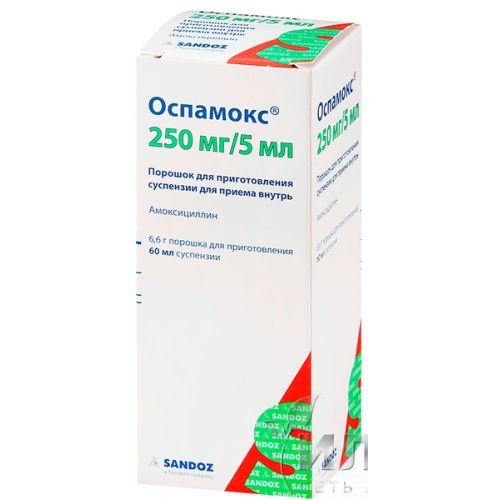
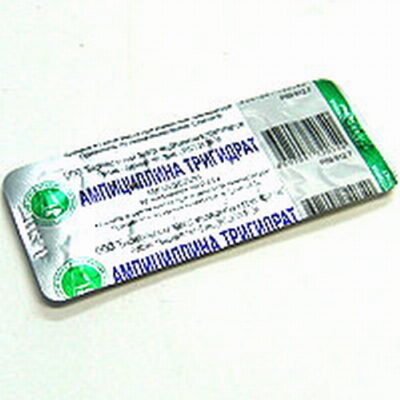
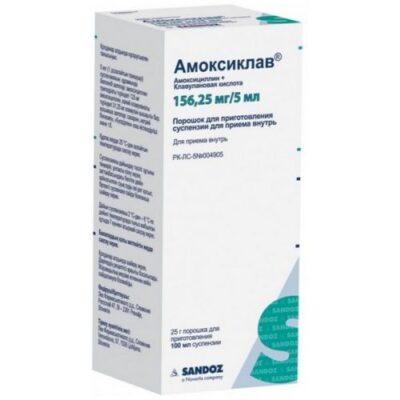
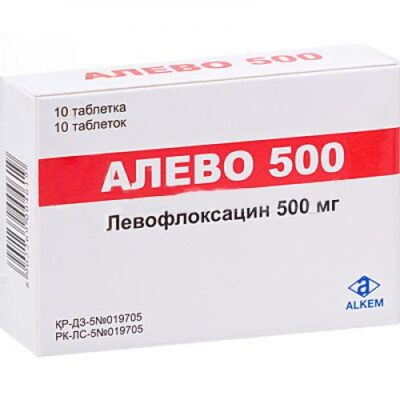
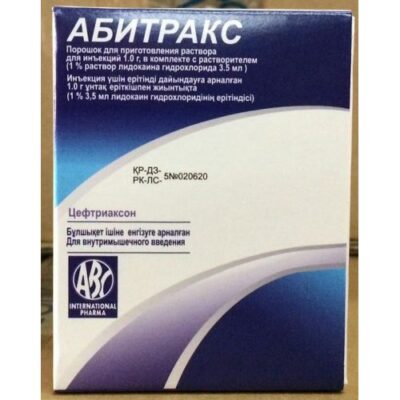
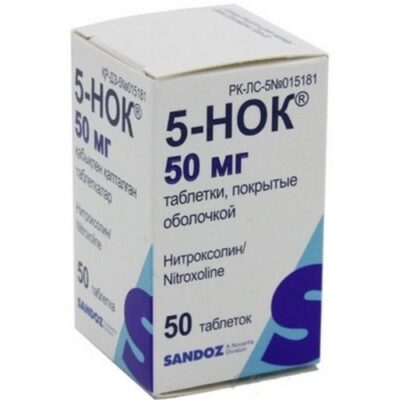
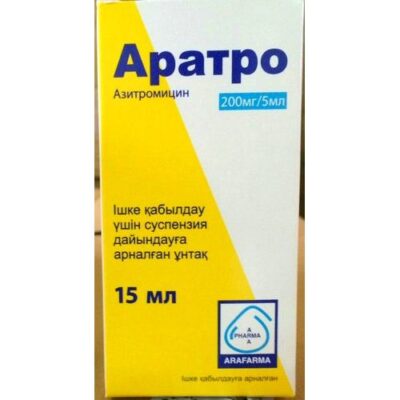
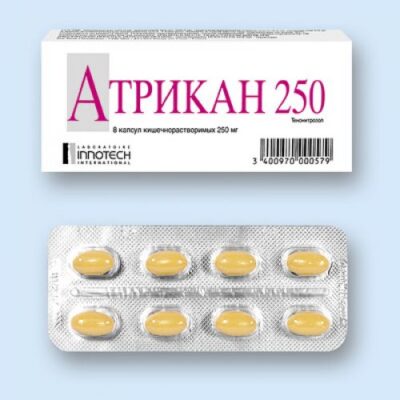
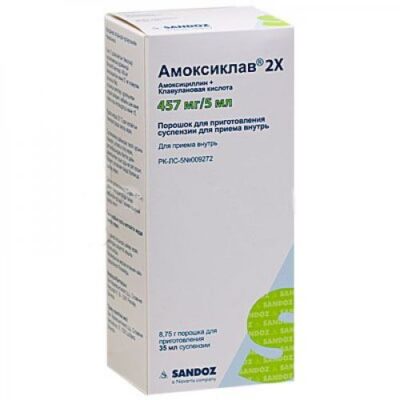
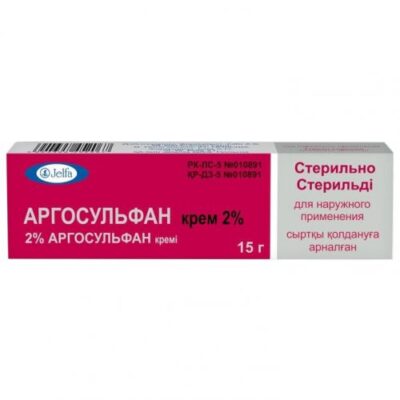
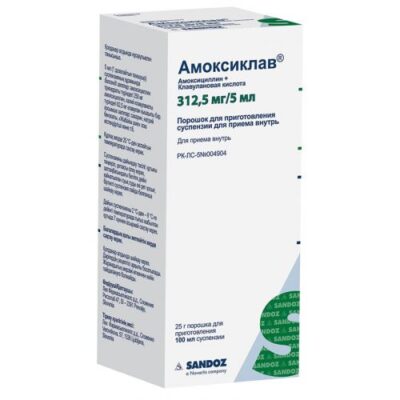






Reviews
There are no reviews yet.